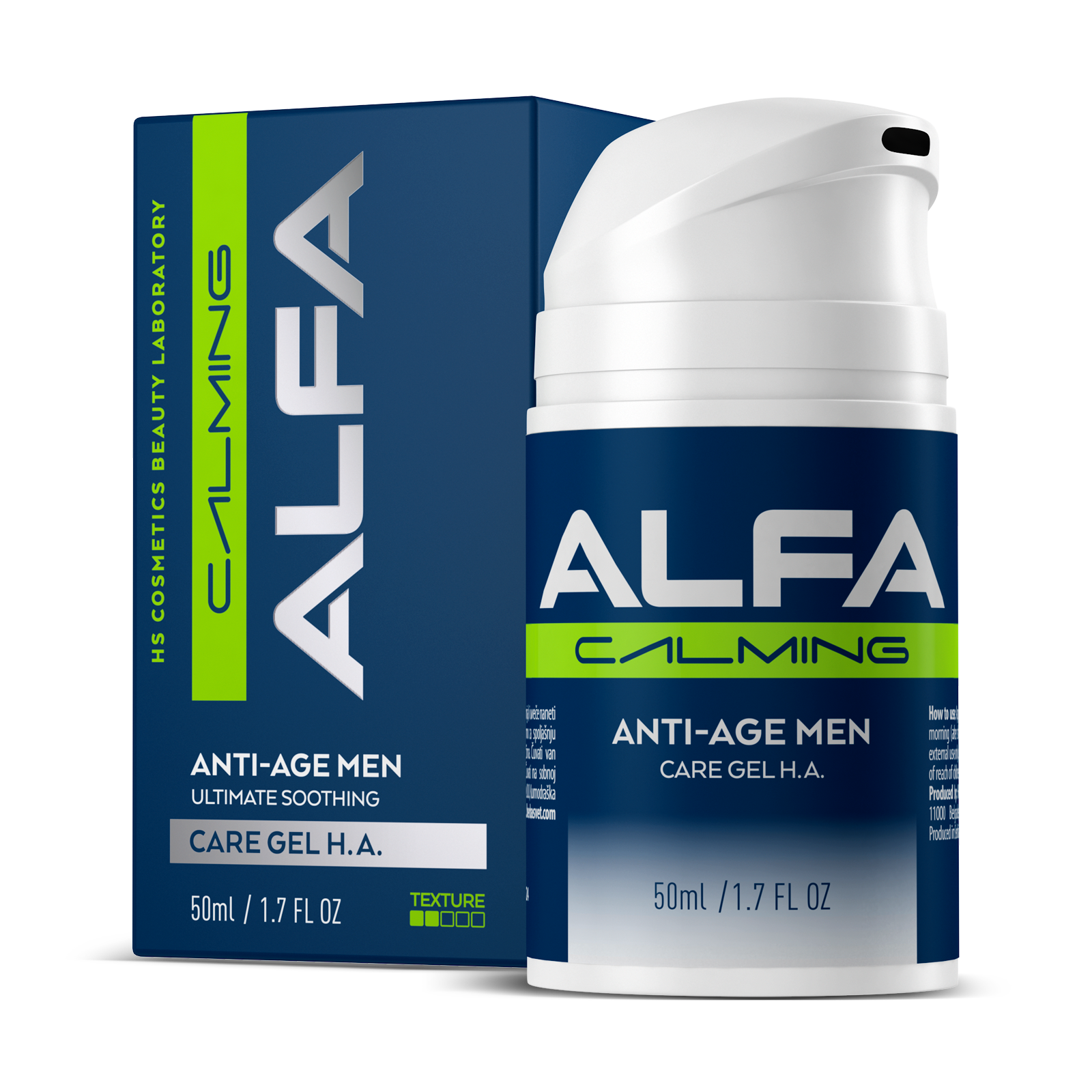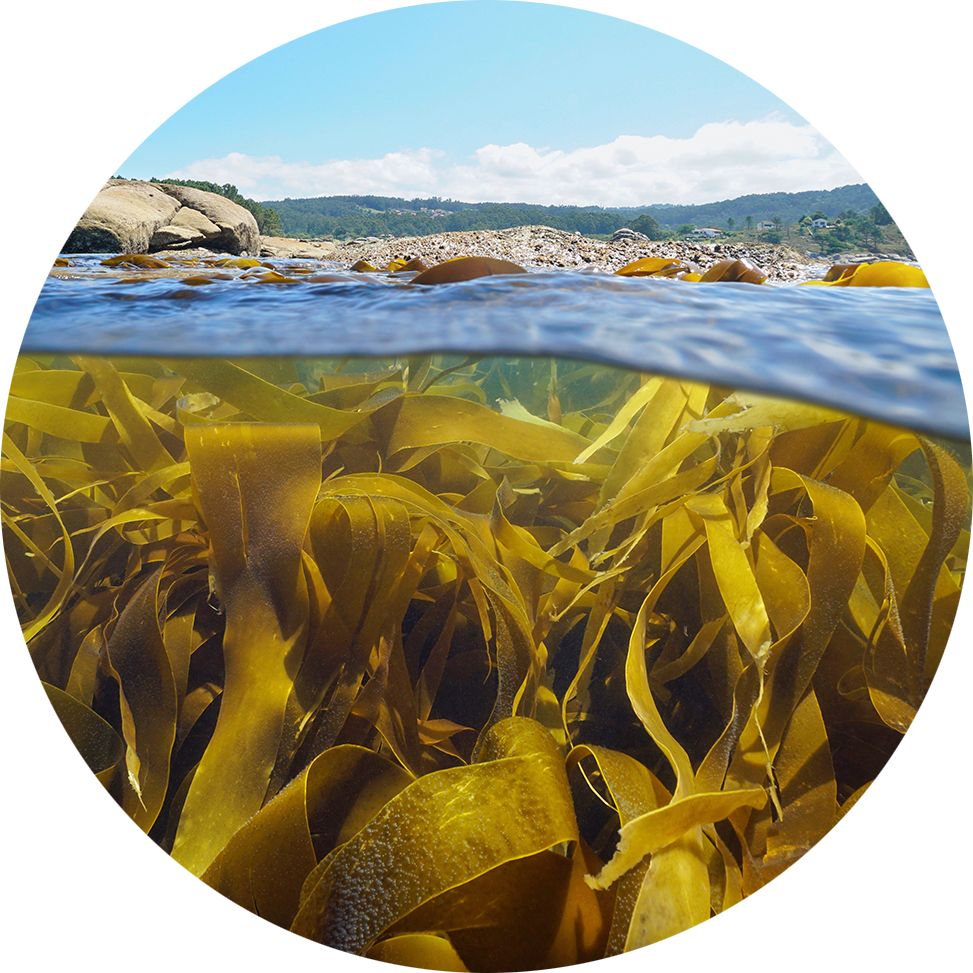(Laminaria japonica, Macrocystis pyrifera)
As we walk the Earth we are not even aware that we, as terrestrial beings, are limited to only 30 per cent of the space on our planet. The rest is occupied by the seas and oceans, which are home to over 90 percent of organisms. We still do not even know that many of them exist, so the more we, humans, conquer oceans’ extreme depths, the more we encounter extremely unusual creatures that live in seemingly impossible conditions – in the depths of over several thousand metres, in complete darkness and cold, but also around hydrothermal vents surrounded by heavy metals and extremely high temperatures. The marine flora forms only in the surface part of the sea, because it depends on the sun as it feeds through photosynthesis. Algae come to us in various shapes and sizes, from microscopic to the largest – kelp, of which there are entire underwater forests which represent an important part of the ecosystem. It is estimated that there are about 10,000 species of algae today. Not only are they the first link in the food chain in the seas and oceans, but they also produce about 70 per cent of the total oxygen in the atmosphere.
A 14,000 year old archeological site in Chile bears testimony to the fact that humans have used algae in their diet for a very long time. One of the longest-lived nations, the Japanese, still have algae on their dinner table – they cannot imagine life without nori, kombu, wakame or mozuku algae which are an integral part of soups (ramen), stews, salads or side dishes. Today, science has confirmed that algae are so healthy that they have been awarded the title of a “super food”.
WHICH NUTRIENTS DO ALGAE CONTAIN?
Algae are primarily an excellent source of iodine, a trace element that is necessary for the normal functioning of the thyroid gland, and thus of complete metabolism. In normal circumstances we can get enough iodine through food. However, when there is a scarcity of food – for example during a famine – thyroid disorders such as hyperthyroidism (overactive thyroid) or hypothyroidism (under-active thyroid) become common. In coastal areas, where even the poorest people can collect algae and use them in their diet, these disorders have not occurred even during the most difficult periods of human history. Laminaria and Saccharina species contain most iodine – therefore they are often used in their dried form as supplements.
In addition to iodine, algae are an excellent source of iron, which is easily absorbed as algae contain a lot of vitamin C. They also contain a very high level of carotenoids that do not only preserve our eyesight, but are also powerful antioxidants that protect us from the most severe disorders. Algae are rich in flavonoids and phenolic acids, which are also great antioxidants. When it comes to vitamins and minerals – algae have a high concentration of vitamin K1, folic acid and magnesium, as well as vitamin A, pantothenic acid (B5) and calcium. They have another interesting ingredient: alginate. It is a fibre that helps digestion, gives a feeling of satiety and greatly reduces the absorption of lipids in the digestive tract: therefore, algae help us not to gain weight. It is now clear why the Japanese are slender, long-lived, have healthy bones, a clean complexion, good eyesight and rarely suffer from cardiovascular disorders and cancer.
GUARDIANS OF HEALTH AND SUPPLE SKIN
But we do not only have to consume algae as food, we can also apply them externally, to the skin. Today, algotherapy and thalassotherapy, the therapeutic use of sea products for health and beauty, are becoming increasingly popular. Modern research has proven that algae extract has a hydrating effect, it improves microcirculation and is an excellent fighter against cellulite, it reduces inflammatory processes, has an antimelanoma effect, while having a positive effect on the extracellular matrix, promotes keratinocyte proliferation and collagen synthesis.
The mechanism in which algae act continues to fascinate. Research has shown that, when exposed to ultraviolet radiation, algae produce special compounds, MAA amino acids that have a strong antioxidant effect. This property is valuable in protecting the skin from harmful UV radiation, hyperpigmentation and melanoma. Fucoxanthin, a pigment just like carotenoid isolated from algae, also exhibits a strong antimelanoma effect through antipigmentation activity, just like chlorophyll and phycobilins (phycocyanin, phycoerythrin).
Two types of algae are especially used in cosmetology and dermatology today: the Japanese brown alga Laminaria japonica and Macrocystis pyrifera – kelp.
Laminaria japonica has a particularly beneficial effect on the skin, in addition to being an extremely healthy part of the diet because of its proven anti-inflammatory and antioxidant properties, its positive effect on the levels of triglycerides and cholesterol and in addition to promoting a healthy intestinal microbiota. Studies have shown that this alga has a great power to retain moisture inside the skin thanks to humectants and hydrocolloids. Another study, which looked into its anti-ageing effect, found that the extract of this sea plant improves skin thickness and collagen content, accelerates the expression of antioxidant enzymes in skin tissue and prevents oxidative stress, thus protecting the skin from ageing.
Kelp, or Macrocystis pyrifera, which thrives best in the temperate zone where the water temperature does not exceed 21 degrees, acts as a powerful cleanser of the body, protects the balance of thyroid hormones, improves the brain function and raises energy levels, in addition to other numerous health benefits. Recent research into the effect of this plant on the skin has confirmed that kelp has an extremely strong anti-inflammatory effect: during an inflammatory response, enzymes are activated that lead to increased levels of lipoxin, resolvin and protectin; fermented algae are effective in all three phases of inflammation, thus again protecting the skin from accelerated ageing.
For all these reasons, these two algae reached the Herba Svet laboratory. Laminaria japonica and Macrocystis pyrifera are part of two top quality cosmetic preparations from the Devi collection.
Calming Anti-age Men is a formula specially intended for men that protects the skin from irritations and is therefore especially useful after shaving; it retains moisture and eliminates small signs of ageing. In addition to algae, this light gel also contains the Q10 coenzyme and hyaluronic acid.
Hyaluronic Acid & Algae Serum is a special formula enriched with sea algae extract intended for dry, tired and sensitive skin. This brilliant serum that has a high concentration of silicon acts directly against wrinkles, nourishes and moisturises the skin, soothes irritations and has an antioxidant effect.


